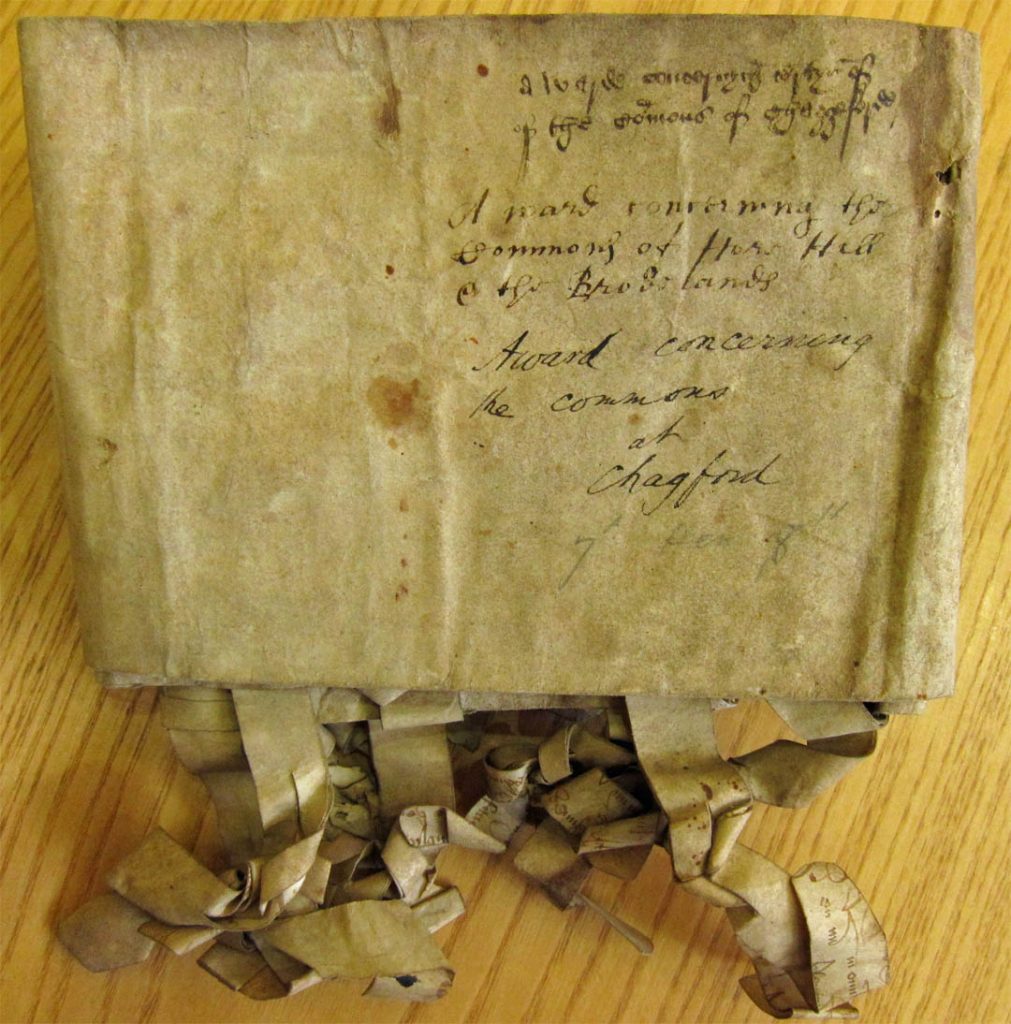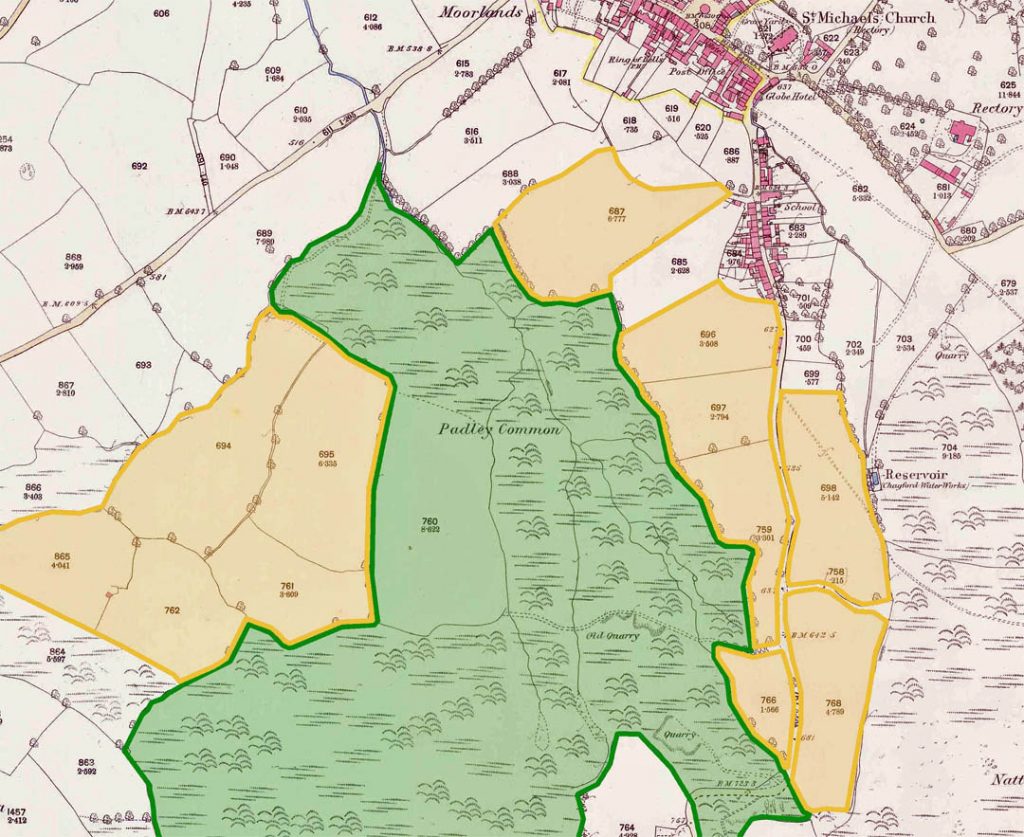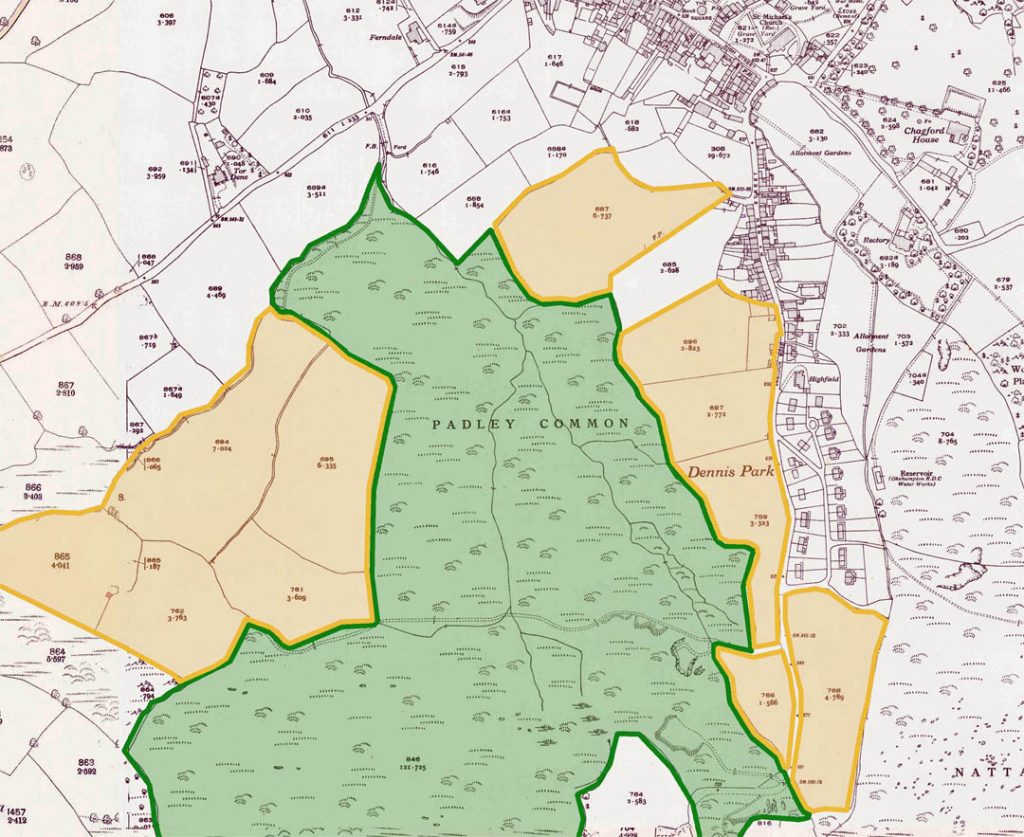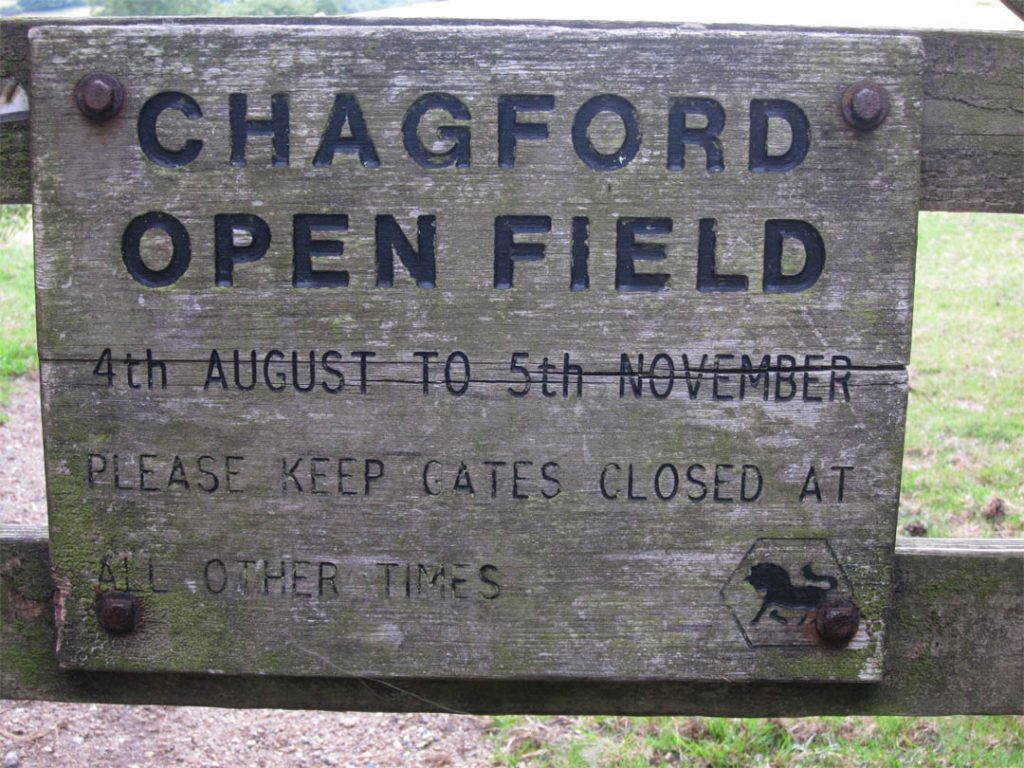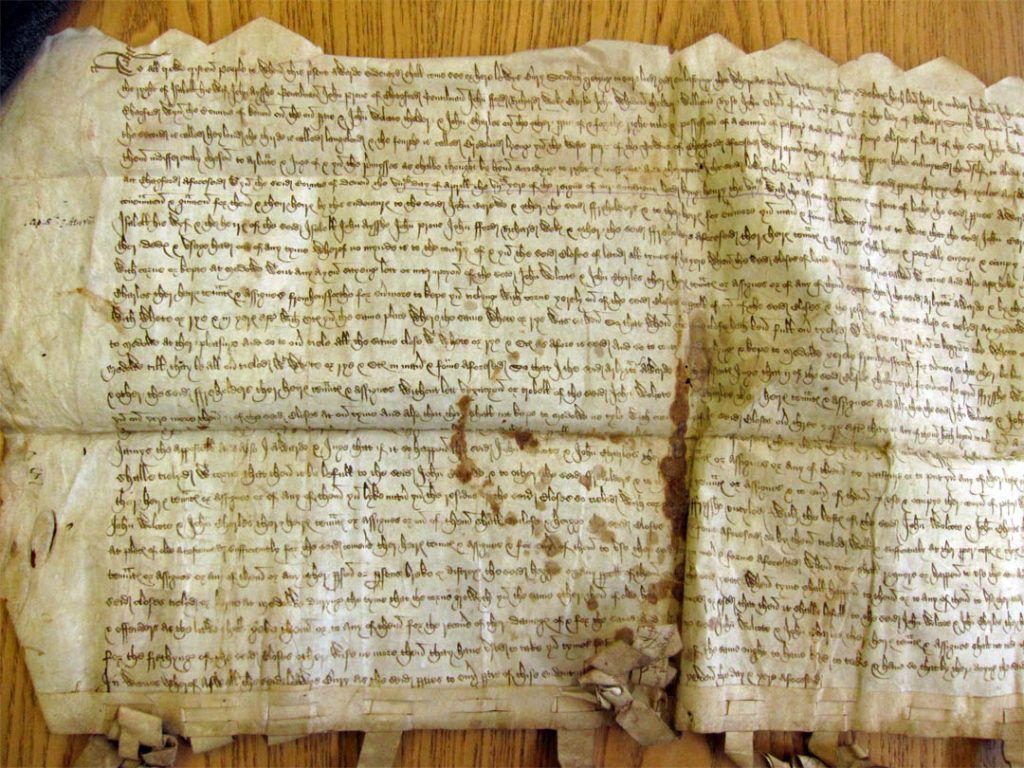
The Chagford Open Fields illustrate how a curious and apparently antiquated custom can continue to the present day. There are now eleven of these fields, consisting of about 54 acres of enclosed land stretching from the south side of New Street down to Padley Common, and then along to and beyond the Recreation Ground. All the fields are privately owned, but they are called “open” because for three months between 6th August and 6th November, they have to be opened up for use by any parishioner of Chagford. While the tradition is widely admired, there are obvious tensions between the freedoms that are normally associated with private ownership and a strongly held custom for local people to use the fields for three months. Legal minds have been intermittently grappling with the issue for hundreds of years!
The Chagford Open Fields have similarities to Lammas fields, found elsewhere in England, where certain people used to have the right to graze their animals after the harvest, often until March or April the following year, that is to say to the beginning of sowing time. Lammas Day celebrates the harvest and is not a specific date, being any time between 1st August and 1st September. Chagford is different, as the fields are “open” just for three months, before the winter sets in.
No one knows when this custom started or why, but it’s certainly been part of the yearly calendar since mediaeval times. Given their proximity to Padley, Meldon and Nattadon Commons it’s possible that the fields were formerly open common land, which were then enclosed, but with some residual common rights still maintained. The earliest mention we have is a document dated 1516, which records the settlement of a dispute between the owners of five of these fields and certain freeholders of Chagford. It refers to the custom that even then seemed immemorial, that the common rights of pasture and estovers (taking wood and bracken) had existed for longer than any human memory, or in the language and spelling of the day:
“common of estovers and also comyn of pasture for all their bests, accordying to deds and usage, had not of any tyme wherof no mynde is to the contrary”
The document also confirms the ways the fields should be managed in regard to grazing, crop rotations and the upkeep of hedges and gates and who should have responsibility for these practices.
Legal complications in the twentieth century
The anomaly of ownership of the fields being restricted by other people enjoying rights to use them for a quarter of a year has probably been a matter of quiet mutterings for centuries. In more recent times the issue has been publicly discussed and finally legislated on. At the early part of the twentieth century, when public provision of community facilities and housing started to become the responsibility of local government, from the parish council upwards, some the fields were looked to for the site of rec rea t ion amenities and housing. Their location so close to the centre of the town made them the obvious choice for this. But with certain rights being attached to these fields purchasing them for these purposes wasn’t just a matter of dealing with one owner. In 1903 t h e Charity Commission conducted an enquiry to investigate the feasibility of setting up a charity that would be responsible for a swimming pool and recreation area on part of the field known as Hore Hill. However, the following year it closed the case, concluding that, with its complexities of private ownership and timelimited common rights, the matter was beyond its jurisdiction.
Council housing was eventually built on one of the fields, known then as Dennis Park, during the 1920’s, but permission to acquire the land for this purpose had to be approved by a special ministerial decision, which involved the extinction of the three-months-a-year grazing rights on the field.
The ambiguous status of Chagford Open Fields was clarified finally with a judgment made in February 1985, following an enquiry by the Commons Commissioner, and put under the wing of the Commons Registration Act of 1965. The fields were deemed not to be common land, but had nonetheless had to be opened up to the parishioners of Chagford between 6th August and 6th November and that the ownership for these three months should be in the hands of a charitable trust. Known as the Chagford Open Field Charity, the Parish Council acts as the trustees. After 6th November ownership passes back to the freeholders.
The enquiry held in 1984 had to consider 41 common registration claims over the fields and much of the evidence heard gives a fascinating insight into the uses some Chagford folk had for the fields over the three month open period and, in some cases, the rather high expectations some had of the extent of their presumed rights.
Right up to the middle of the 20th century many householders, particularly along New Street and down to the council estate of Dennis Park, would take their ducks, geese, pig or sheep to the fields. This was particularly important during the food privations of war time. One of the main access points to the open fields was the lane and gate to Hore Hill, just opposite what was then Chagford Parochial School. One pensioner present at the 1985 enquiry “remembered while attending the school seeing ducks being driven along the road (i.e. New Street) from the commons and open fields to the homes of the owners”.
At the same enquiry one field owner recalled how one Chagford resident kept ponies on the owner’s field prior to the pony market (held in October) and that that “the workers of Chagford who used to go and do jobbing in the area with a donkey or cart to carry the tools and equipment used to put their pony or donkey here to get into condition to start through winter”.
During the open period stock owned by farmers would be put to graze here and also would stray from Padley Common, as the gates between the fields adjacent to the common were kept open during the three months. A striking illustration of how strongly held was this custom was that the gates to the fields were not just opened, but actually taken off their hinges and thrown in the hedges – a most emphatic and physical gesture. This practice ceased in the 1960’s when increased traffic posed a real threat to the stock that frequently roamed out of the fields into the road.
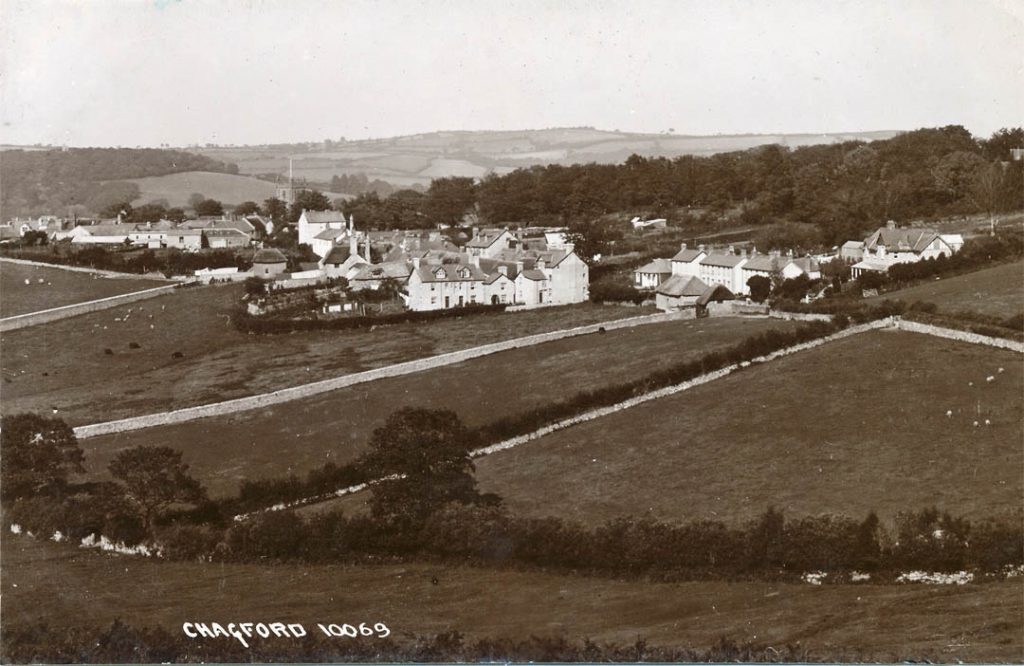
New Street and some of the Open Fields. Source: Robert Sampson
